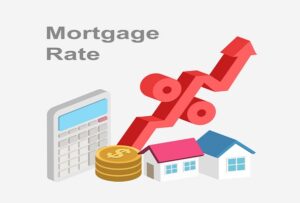Most first-time home buyers require a mortgage to achieve home ownership. Without the right knowledge, the mortgage process can be extremely challenging for first timers. That’s why we want to give you 10 things to consider as a first-time home buyer taking out a mortgage.
- Know your finances and debts
- Consider the costs of home ownership
- Monitor your credit
- Determine what you can afford
- Find a real estate agent
- Research financial programs for first-time home buyers
- Get preapproved
- Shop around for mortgage rate quotes
- Find your home
- Put as much toward a down payment as you can
1. Know your finances and debts

You should know your finances and debts before you consider a mortgage or even start really looking for houses. This is especially important for younger first-time home buyers. If you’re a part of this generation, you may have less money and more debt, primarily in the form of student loans. This can be a huge barrier to home ownership, along with other challenges.
Many first-time home buyers skip this step and go into the mortgage process blind. Resist the urge to say, “I’ll figure that out later.” You can save yourself time, trouble, and tension by knowing your financial state before diving into the mortgage process.
One way to track your financial state is to track your spending. Consider creating a log or spreadsheet that shows how much money you make every month against how much money you spend each month. Include debts, like any student loans, to give yourself a clearer picture of where you stand.
Use the difference between income and debt as a guide to see what a potential monthly mortgage payment would do to your monthly budget.
2. Consider the costs of home ownership

In addition to your mortgage, insurance, and taxes, you’ll have home ownership expenses. For example, if your HVAC system breaks down, you’ll have to pay to fix it. The average replacement cost of an HVAC system is over $7,000, and it can often reach five figures. Costs like these can be surprising and unaffordable if you don’t consider them before you buy a home.
This is where a Home Warranty Service Agreement (home warranty), especially from 2-10 Home Buyers Warranty (2-10 HBW), can come in handy. A systems and appliances home warranty can cut down the upfront costs of repairs or replacements, making protecting your home more affordable.
3. Monitor your credit

The better your credit, the more likely you are to get mortgage terms you like. The best place to start building credit is knowing where you stand.
Did you know that you’re entitled to a free credit report from the Big 3 credit-reporting agencies every year? You can get it from AnnualCreditReport.com. Additionally, there are several free credit-monitoring resources you can use, such as Credit Karma and Credit Sesame.
As you monitor your credit, look for any errors that may be dragging down your score. Contact the creditor when you find an error to begin the process of fixing it. If you find that you have delinquent accounts, such as for missed payments, work to address those issues before applying for a mortgage.
4. Determine what you can afford

If you’ve taken the above three steps, determining what you can afford is much easier. You’ll already have an idea about what you have, what you owe, and how strong your credit is. Generally, lenders don’t want you spending more than 28% of your gross monthly income on housing expenses. This includes your mortgage, property taxes, and homeowners insurance.
Further, you should consider your other debts. Lenders will look at the minimum payment on your credit cards, auto loans, and student loans when considering your mortgage. If your housing expenses plus your other debts account for more than 36% of your gross income, it may affect how much you can borrow, along with your interest rate.
However, even if you don’t meet these goals, it’s still possible to take out a mortgage. You can consult with a lender for more information.
5. Find a real estate agent

A good real estate agent can make the next steps much easier. Agents know the neighborhoods you’ll look at. They have connections and information that will help you find the right house. Agents can help you negotiate the best deal for your budget. They may even work with various lenders, appraisers, and inspectors. A real estate agent is a crucial resource for first-time home buyers.
6. Research financial programs for first-time home buyers

Conventionally, you’d make a 20% down payment to get a mortgage. For young first-time home buyers, this may not be possible, thanks to relentless student loan debt, decreasing affordability nationwide, and vicious competition from other potential buyers.
If you find that you can’t take out a conventional loan, consider some financial programs for first-time home buyers.
- FHA loans: With an FHA loan, you can pay as little as 3.5% down. These loans make home ownership possible for buyers without the means for a 20% down payment. They’re also more amenable to buyers with lower credit scores. They can even help those buyers improve their credit with timely payments. However, FHAs require you to pay extra in mortgage insurance premiums.
- VA loans: Qualifying military members can get lower interest rates and be required to put little or no money down. Though they do not require you to pay extra for private mortgage insurance (PMI) or mortgage insurance premiums, there may be VA funding fees to pay.
Knowing your credit score and situation are important factors for these kinds of loans.
7. Get preapproved

Getting preapproved for a mortgage does two things.
- Shows you the upper limit of what you can afford
- Shows sellers that you’re a serious buyer
In the best case, a preapproval letter can be a difference maker, especially if the seller is motivated to sell.
Pro tip: Just because you’re approved for a certain amount doesn’t mean you must take out a mortgage for that amount. For example, if you’re preapproved for a $450,000 mortgage and find a house for $350,000, you can just request a loan for the sales price minus your down payment.
8. Shop around for mortgage rate quotes

You’ll have to hunt for the best mortgage rates and terms. Different lenders have different rates and closing costs that can affect what you end up paying.
A real estate agent can help you narrow your options down. When you apply for a mortgage, you should compare at least three quotes. If you apply for those mortgages within 45 days of each other, it will only count against your credit once.
9. Find your home

There’s nothing wrong with window shopping for a home as a first step. But until you’ve completed the steps above, you shouldn’t seriously house hunt. Completing these steps first will make your house hunt more efficient and keep you from the temptation of falling in love with a house you can’t afford.
10. Put as much toward a down payment as you can

If you can put down 20% or more, do it. It will save you money in interest and PMI payments over the long haul. It also reduces your monthly mortgage payment. Putting down as much money as possible while still having an emergency fund is a strong strategy.
However, if a 20% down payment isn’t possible, you may still have options. Remember to seek out financial programs that can help you.
Taking out a mortgage is often the first step toward happy home ownership. The next step is making sure your systems and appliances stay protected after the ink dries. A home warranty from 2-10 HBW can make protecting your home simple and affordable.
2-10 HBW offers quality Home Warranty Service Agreement coverage for homeowners. Let us help you protect your home and budget.
Already a customer? You can renew your Home Warranty Service Agreement coverage today!
Do you have a 2-10 HBW structural warranty? You can purchase Home Warranty Service Agreement coverage today!
Related content
How to Get a Home Warranty Quote the Right Way








